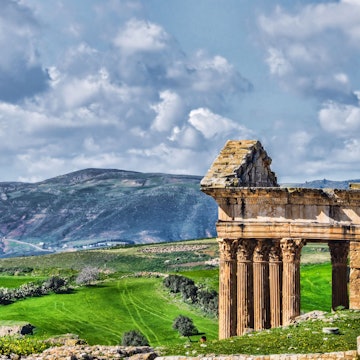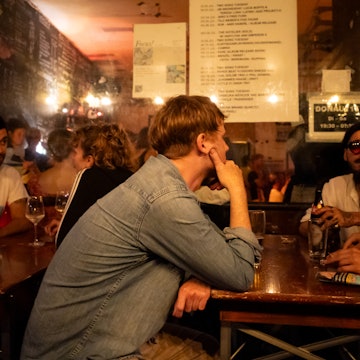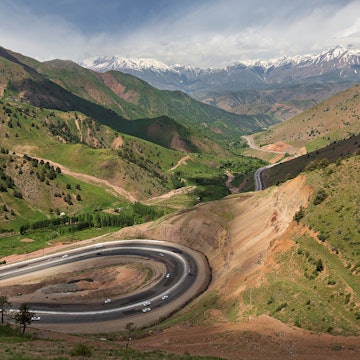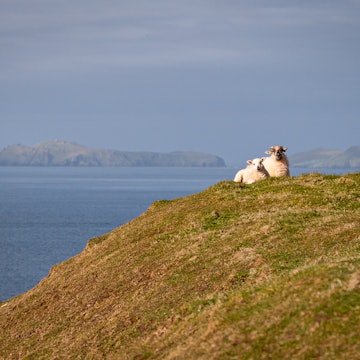

The 14th-century Golubac fortress on the Danube guards the entrance to the Djerdap National Park © Mirjana Ristic Damjanovic / Shutterstock
Serbia may be landlocked, but it boasts one of the most spectacular stretches of the Danube – which clocks up 588km here on its way to the Black Sea – including Đerdap National Park’s astounding Iron Gates gorge in the country’s far east. Largely off the tourist map, this legend-shrouded region makes for a great road trip, with history galore, ancestral wine cellars, arresting natural formations and outdoors thrills ranging from aquatic to subterraneous.

Millennia of history
Brooding medieval forts – now half-ruined – stretch along the Danube from Smederevo to Kladovo, attesting to the river’s historical relevance as the last line of defence against the Ottoman invasion. The hulking, 10-tower Golubac fortress guarding the entrance to Đerdap National Park from a rocky promontory is by far the most evocative of that bygone era. Its lofty 14th-century ramparts will welcome modern-day visitors from March 2019, once a massive EU-funded restoration is finally completed.
Long before the Ottomans, though, came the Romans to wage the Dacian Wars (AD 101–106) under Emperor Traianus. Signs of their presence are scattered around Đerdap, from the Tabula Traiana (a relief carved into the rock to mark the completion of the military road along the lower Danube) to the preserved piers of the long-vanished Traian’s Bridge, once the longest arch bridge in the world. But the most important site is found further upstream – Viminacium, the capital of the Roman Empire’s Moesia province and a military camp during the Dacian Wars. Today you can take a guided tour to see what remains of the ancient aqueduct, amphitheatre, baths and a massive necropolis.
Overlooking the Danube from a futuristic building on a hillside in the heart of the gorge, the Lepenski Vir archaeological site was home to Mesolithic- and Neolithic-era communities that left fascinating stone sculptures of fish-like idols with human faces. The intriguing figurines – including the Foremother, Danubius and Progenitor trio – were only unearthed in the 1960s. Reaching across millennia, they speak of the mighty river as the source of life for human settlements since the dawn of time.

Cruising the Danube
The formidable cliffs of the 100km-long Iron Gates soar up to 500m in height; at Mali Kazan, the Danube cuts through Jurassic limestones of the Carpathians to reach the narrowest (150m) and deepest (93m) points in its entire course. This striking scenery is best admired from the water. To cruise the river in style, sign up for a three-day excursion from Belgrade to Kladovo and back, including a full day aboard the Aquastar Maxim and a trip to the Negotin region’s old wine villages and stunning rock formations.
Day-long bus-and-boat tours down the river, which take in the best of the gorge, can be booked through Serbian Adventures. Starting from Belgrade or Novi Sad, they call by the two big-hitters, Golubac fortress and Lepenski Vir. For a different perspective and entertaining stories about Golubac’s mysterious past, join the two-hour cruise with a local historian and Đerdap enthusiast, Jovan Kocmanović. A quick and fun way to see the Roman-era highlights of the Iron Gates, including the huge rock sculpture of the Dacian king Decebalus on the Romanian bank of the Danube, is by speedboat from Tekija; the trip takes one hour.
A welcoming stop on the way from Belgrade to Đerdap, especially for those travelling along the Danube Cycling Path, is the oxbow-shaped Silver Lake (created by damming an arm of the river). A marina, beaches, swimming pools and sports courts conspire to keep visitors from moving on, but for a pleasant afternoon out, hop aboard the Silver Star for a four-hour boat tour to Ram or Golubac citadels.

Outdoors adventures
With marked paths and signposted viewpoints, Đerdap National Park is an excellent hiking destination (be sure to register with the visitors centre three days before setting off). Two 7km trails lead from the Đerdap highway to the highest peaks of Mt Miroč: Veliki Štrbac (768m), which offers dramatic views over the narrowest part of the gorge; and Mali Štrbac (626m), from where you can admire the Decebalus rock sculpture across the river. Deeper inland, the Negotin region hides three gigantic stone arches – known as the Vratna Gates – moulded by erosion in the Vratna river canyon. Marked trails (1km to Small and Big Gates, 5km to Dry Gate) snake uphill through the forest from the serene Vratna Monastery; the last arch is the most impressive but also the least accessible.
One of Europe’s best long-distance cycling routes, the EuroVelo 6 hugs the Danube for 110km through Đerdap and is fully signposted. ACE Adventure offers week-long self-guided tours downstream from Belgrade to Kladovo, via Silver Lake and through the national park. For water-based adventures, your best bet is the experienced team at Wild Serbia, whose fun-filled one-day kayaking trips in the Iron Gates gorge are combined with a visit to Golubac and Lepenski Vir.
A scenic backdrop to Đerdap National Park, the cave-studded Homolje mountains are another option for adventure seekers. Explore this subterranean landscape at the famed 2km-long Rajkova Cave – according to legend, once a hideout of a Turkish-era hajduk (outlaw) it’s named after. Clustered around Kučevo are two smaller caves: Ceremošnja, with attractive cascading columns, draperies, flowstones and waterfalls; and Ravništarka, known for a black-rock cavern hall streaked with snow-white calcite.

Gastronomic highlights
Fantastic views over the Danube and an introduction to traditional Vlach cuisine from eastern Serbia are reason enough to visit the sprawling hillside complex of Kapetan Mišin Breg, 6km upstream of Donji Milanovac. The delicacies you’ll get to sample here include homemade cornbread, braised nettles, stewed chicken livers, grilled mushrooms, medovača (honey brandy), elderflower juice and more; there’s also a small wine museum. Booking ahead is essential.
Just-caught, perfectly grilled river bounty is, naturally, the speciality all along the Danube route. At Silver Lake, settle in at Sidro on the shoreside promenade for a choice of trout, perch or the succulent som (catfish); go at dinnertime to enjoy a shimmering lake sunset. In Golubac, the outdoor terrace at Zlatna Ribica has a thoroughly seaside feel: the Danube is at its widest point (7km) here, with the ancient fortress looming in the distance. Take your time soaking up the panoramic views over delectable carp chops, paprika-spiced fish soup or stuffed squid on the grill.
A must for oenophiles, the Negotin region in the Danube’s hinterland has been growing wine since the 3rd century. The atmospheric villages of Rajac, Rogljevo and Smedovac feature entire streets of architecturally unique 18th- and 19th-century wine cellars, or pimnice, made of stone and partially buried into ground. Some are open for visitors and offer lodgings, such as Pimnica Perić in Rajac village, which is owned by the sixth generation of the same family. Drop by to taste the white (Bagrina and Smederevka) or red (Prokupac and Začinak) varietals that are indigenous to the region.
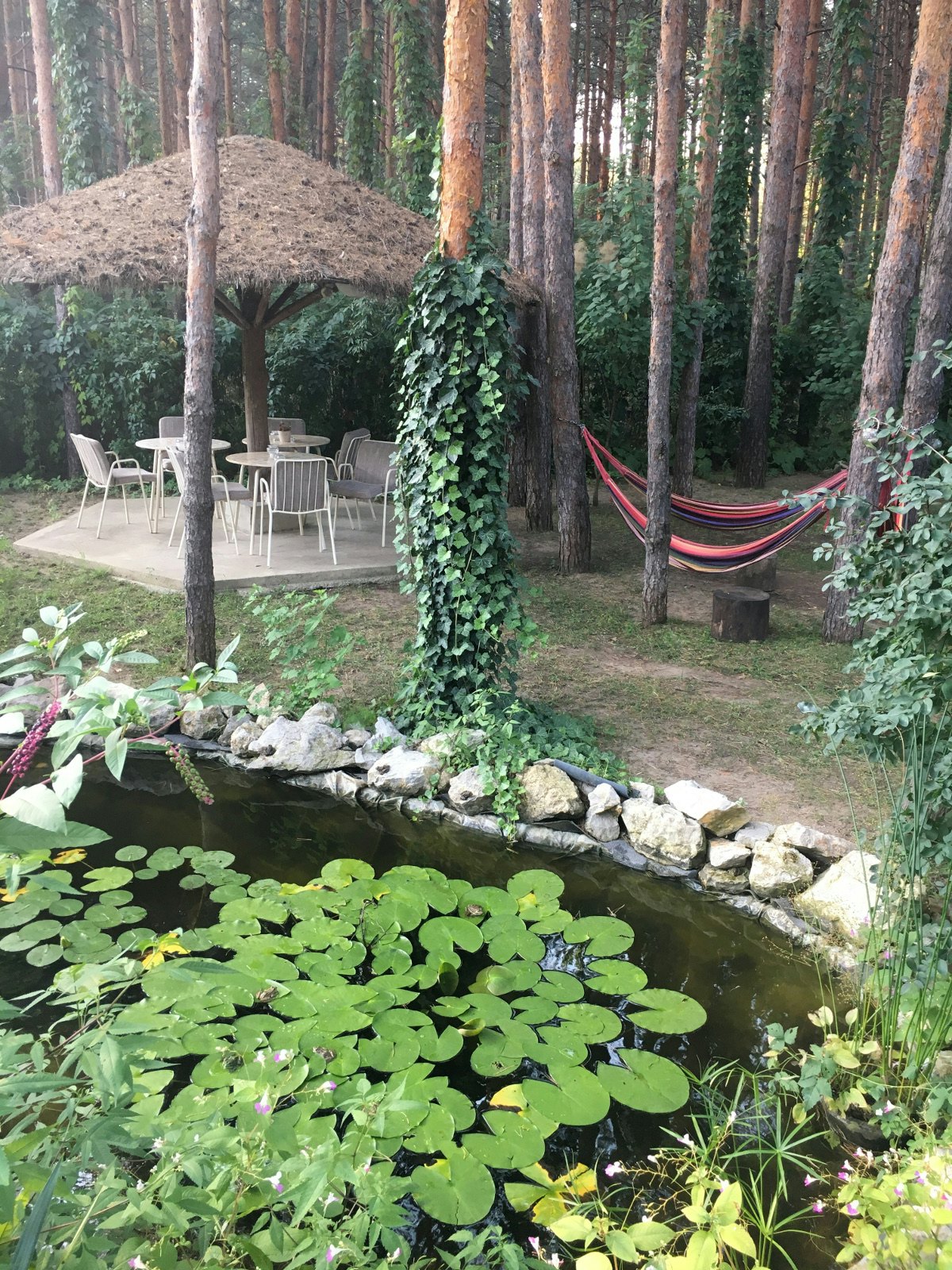
Make it happen
Travelling with your own wheels is recommended, not only because of the sporadic bus timetables and the convenience of reaching more remote and rural destinations, but also because the Đerdap highway (M25-1, aka Đerdapska magistrala) that winds its way along the Danube is a wonderfully scenic drive. Note, though, that most roads in eastern Serbia are often in poor condition; be prepared for an occasionally bumpy ride.
Guesthouses and private digs are the go in these parts and are generally great value. Vila Dunavski Raj, tucked away deep in a pine forest not far from Golubac, gets a gold star for location, while elegant Vila Delux in Negotin is a great base for exploring the region’s wine villages. Cyclists will find a couple of campsites conveniently set up along the Danube. The large hotels in Donji Milanovac and Kladovo offer easy access to Đerdap National Park and the Iron Gates gorge.
Make the most of your travel with sightseeing tours and activities from our trusted partners.






